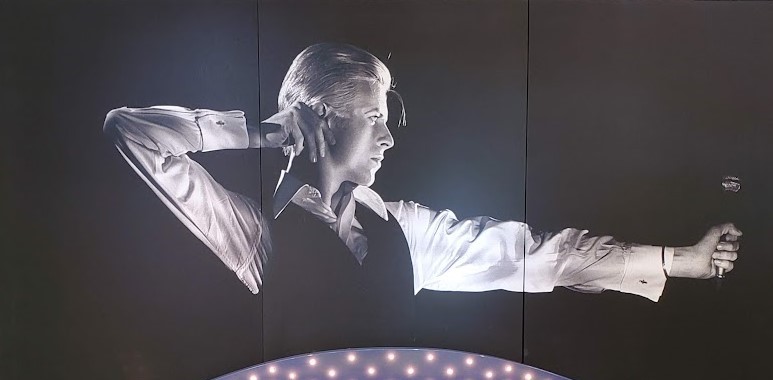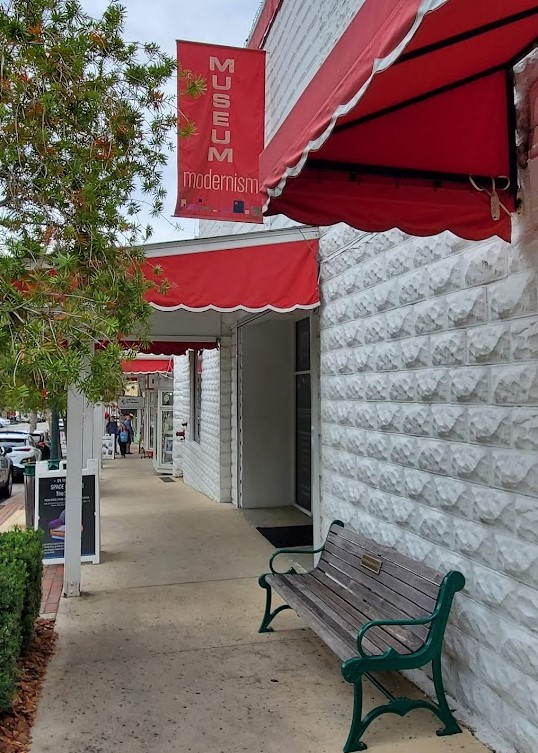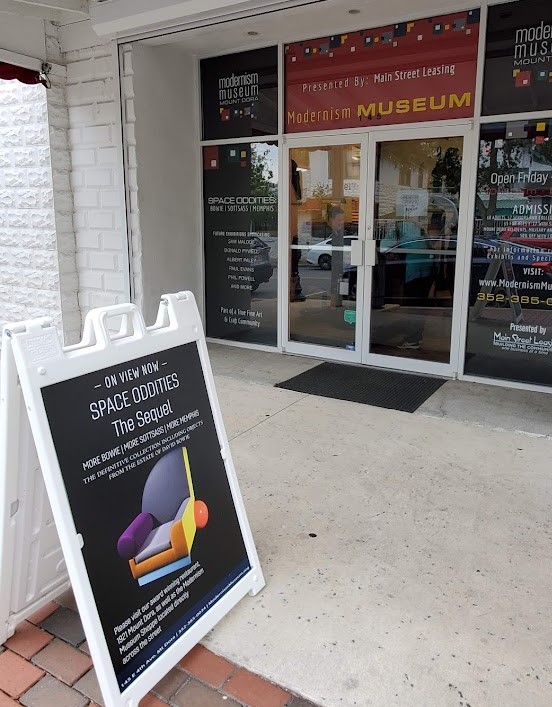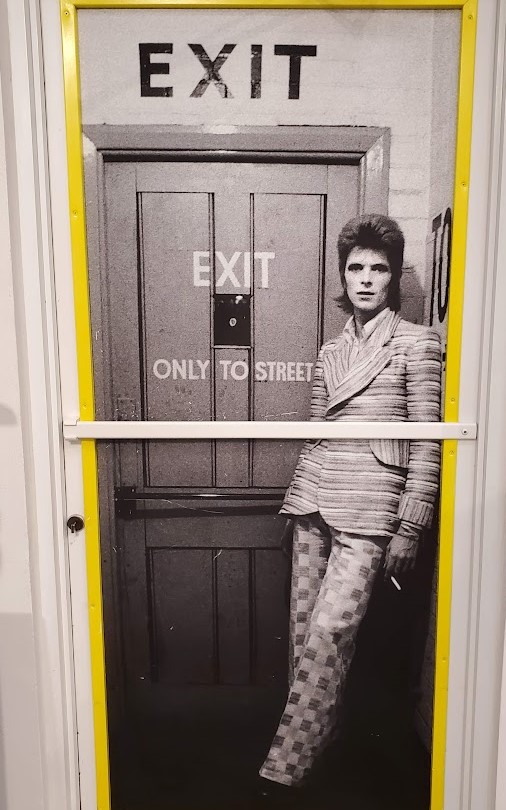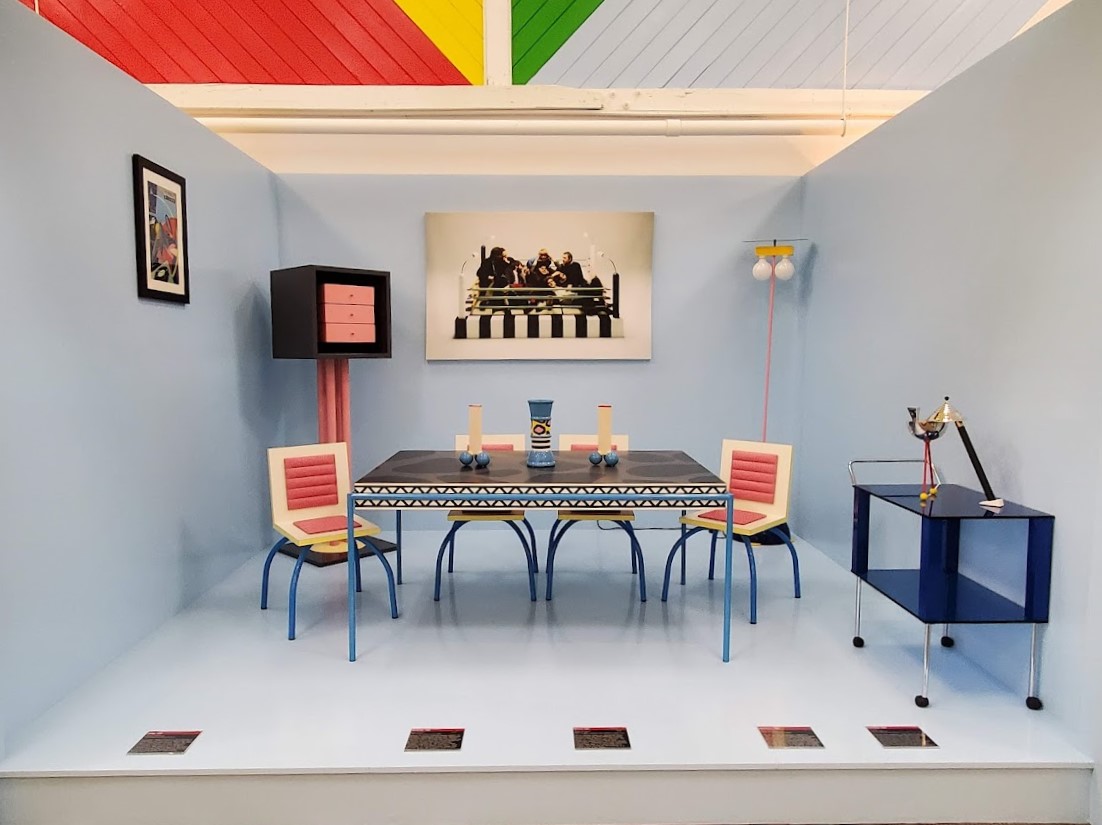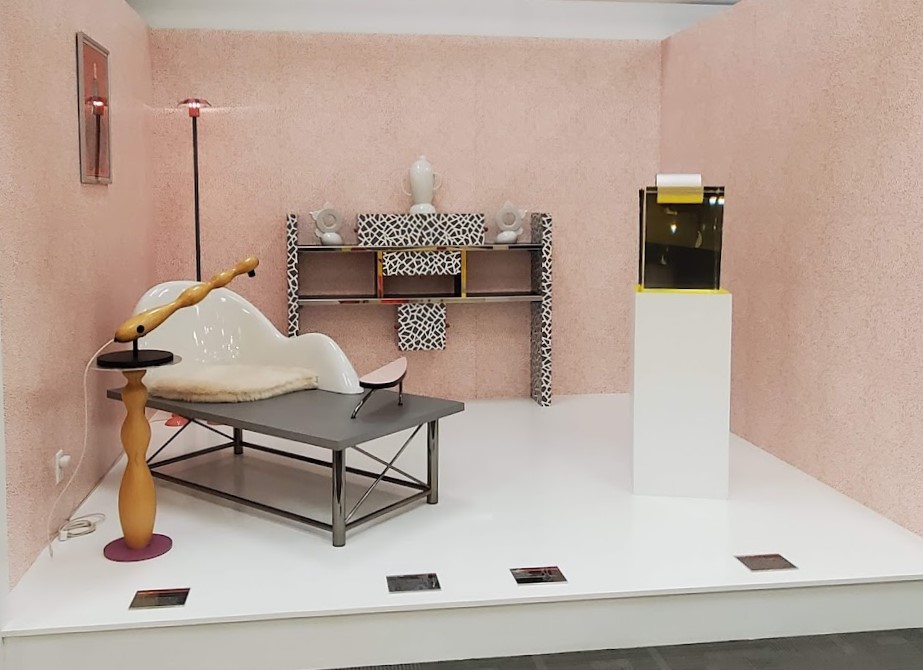From the Renaissance through the mid-19th century, Western artists applied the logic of perspective in their work and were judged by their skill in reproducing reality. But fundamental changes in technology, science and philosophy were occurring by the end of the 19th century, inducing a series of new aesthetic movements. Some were longer-lived than others. Some built off what went before while others unabashedly rejected what went before. The Memphis Design Group did both.
By 1980, some designers were chafing under the yoke of the restrained lines and minimal color palette of modernism. In December of that year, in Milan, Ettore Sottsass called together a group of colleagues to confront the rigidity of post-war design, especially the streamlined, circumspect design of the 1970s, and its focus on function over form.
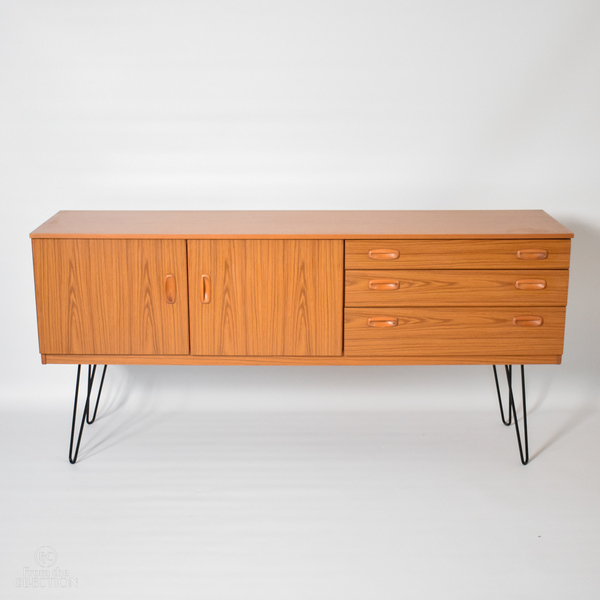
Schreiber Sideboard 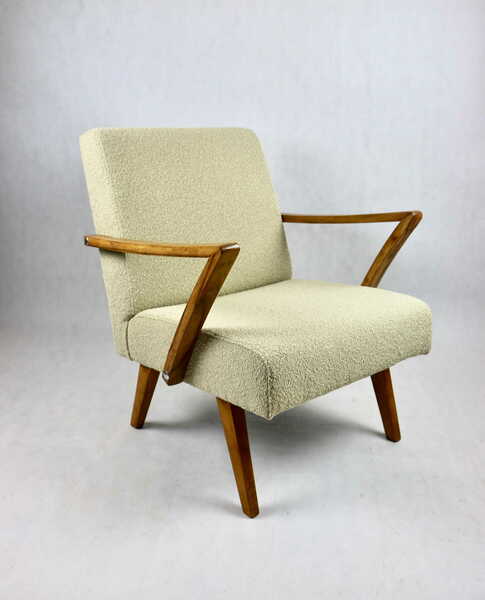
Classic Armchair, Beige Boucle Walnut Wood 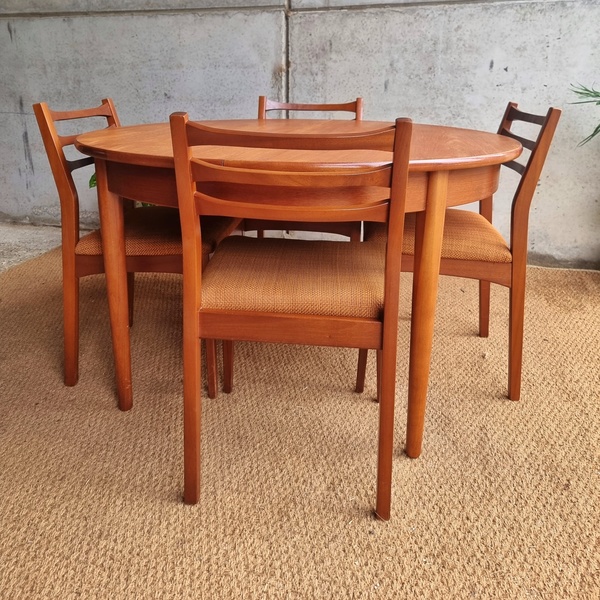
“G-Plan” Teak Table & Chairs
We can only image the spiritedness of this gathering in Sottsass’ small apartment, with the Bob Dylan song Stuck Inside of Mobile with the Memphis Blues Again playing on repeat, an undoubtedly endless supply of wine, and enthusiastic talk of a design revolution. Sottsass wanted to bring out the ‘radical, funny and outrageous’ in a melding of Art Deco lines, pop art color, 1950s kitsch, and futuristic themes.
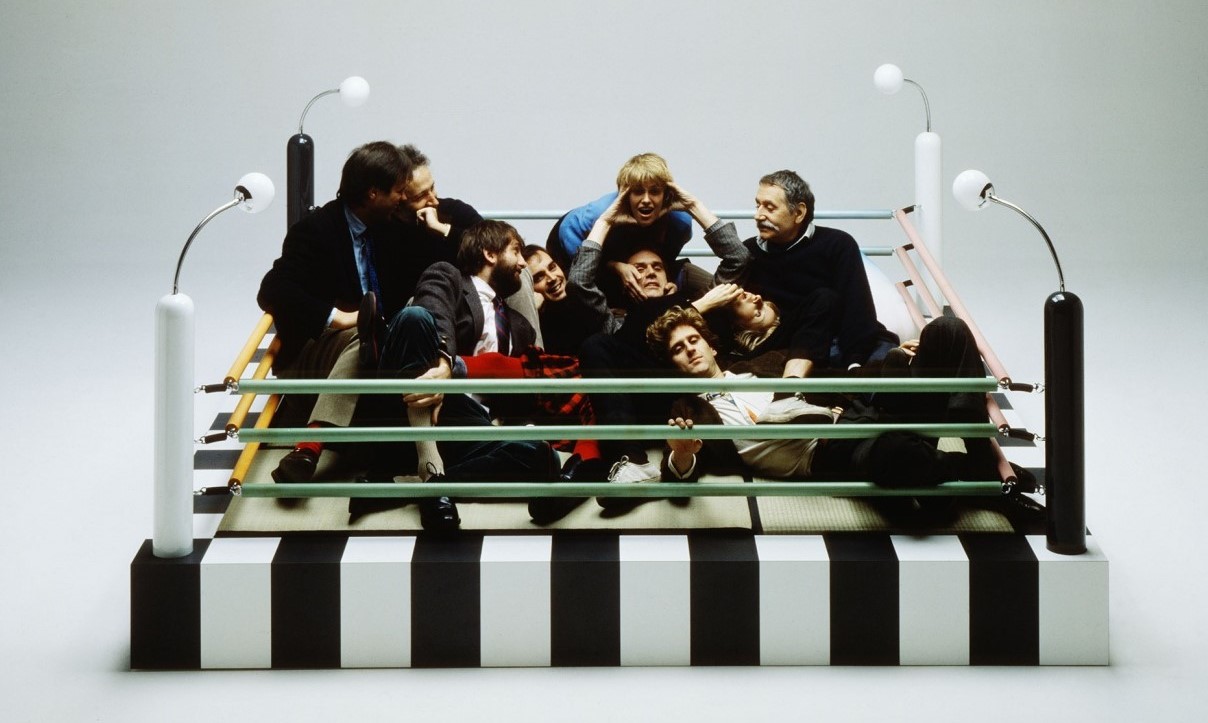
The founding Memphis group on Masanori Umeda’s Tawaraya Boxing Ring Bed
Everyone left the meeting intent on coming up with ideas. Three months after that first gathering, the group met again, bringing more than a hundred drawings with them! The collective was named The Memphis Design Group, (aka Memphis Milano) after the Dylan song, and they made their debut at the Salone del Mobile Milano (Milan Furniture Fair) in 1981 with fifty-five pieces.
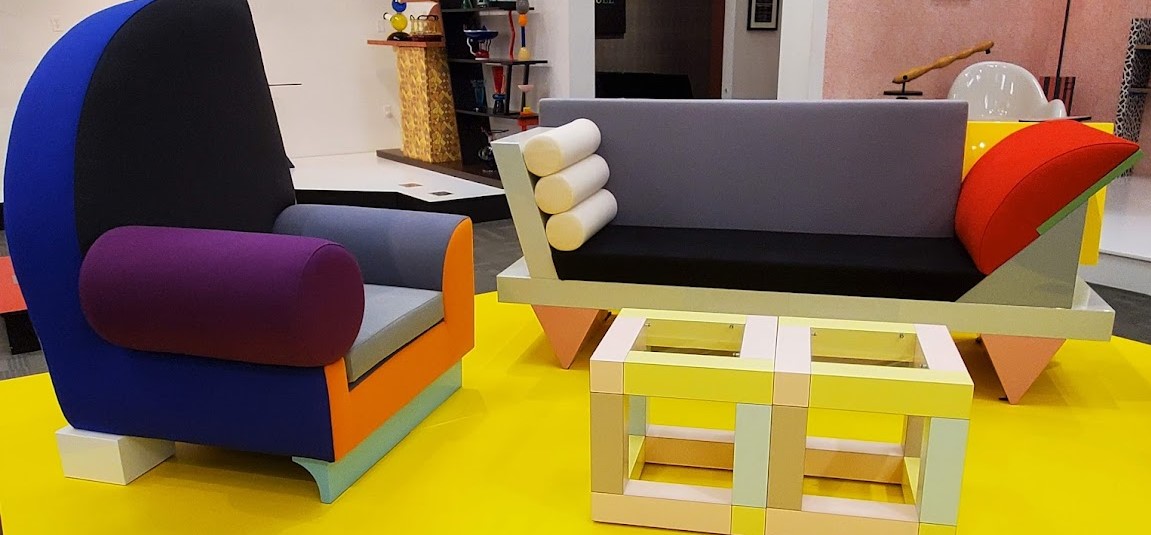
Bel Air Armchair, 1982 and Big Sur Sofa, 1986, Peter Shire
The brilliant colors, seemingly arbitrary lines, and plastic laminate surfaces of their furniture was completely new – and shocking to some. They spoofed familiar every-day objects, designing them as playful eye-candy, taunting the principles of so-called ‘good design’.
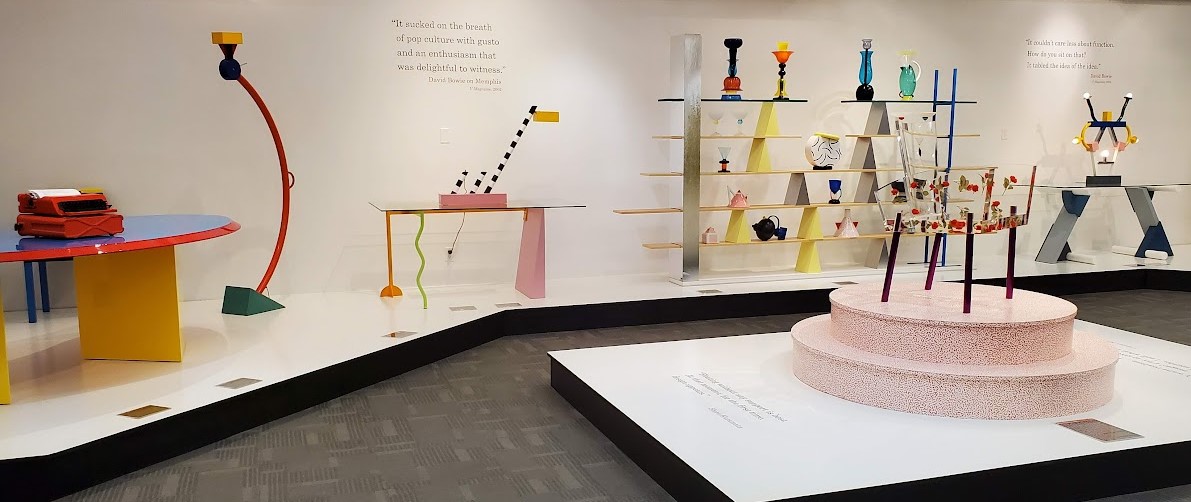
Of course – as is always the case with new movements — their work was widely ridiculed. Nonetheless, it did find immediate fans, with Karl Lagerfield assembling a collection of key pieces, many of which decorated his office. David Bowie became an avid collector, and at his death it was revealed that he owned more than 400 pieces.
“It didn’t look serious. It looked like a prank. It mixed formica attitude with marble diffidence. Bright yellows against turquoise. Virus patterns on ceramics. It couldn’t care less about function. each piece of furniture offered a plethora of possibilities, options and inconclusive open ends.”
David Bowie on Memphis, V Magazine, 2002
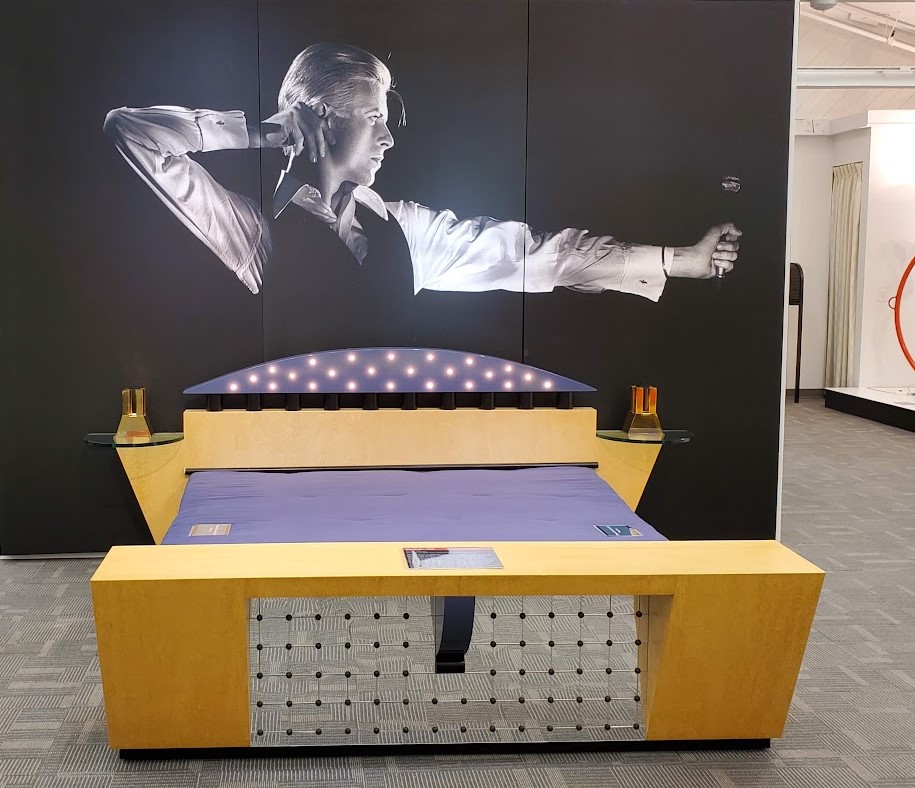
Stanhope, 1982, Michael Graves. Bed in bird’s eye maple veneer, lacquered wood, mirrors and lamps in brass
When Bowie began avidly collecting Memphis in the 1990s, he moved his acquisitions around among his various properties. After his death in 2016, much of Bowie’s collection was sold at auction at Sotheby’s — and many of those pieces found their way into this collection. Kinda cool to think that David Bowie ate his meals at that table!
The eye-catching red and white exterior of the museum offers no hint of the visual stimulation percolating inside.
First impression for a post-modern newbie? OMG — preschool on acid!
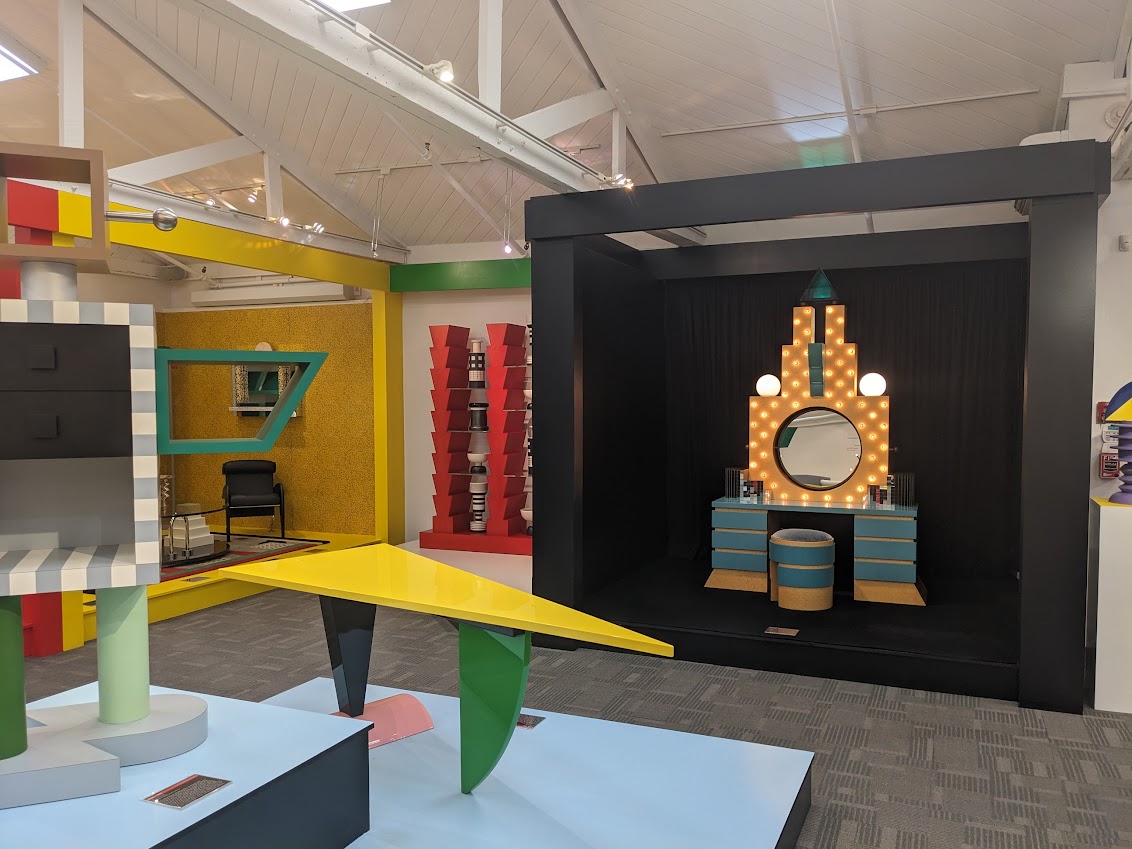
Installation view 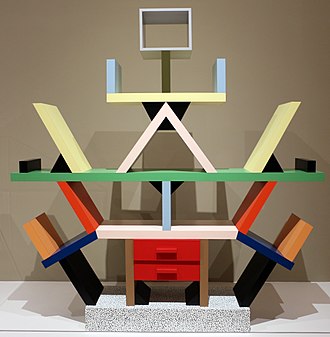
Carlton Room Divider, 1981, Ettore Sottsass. Wood & plastic laminate
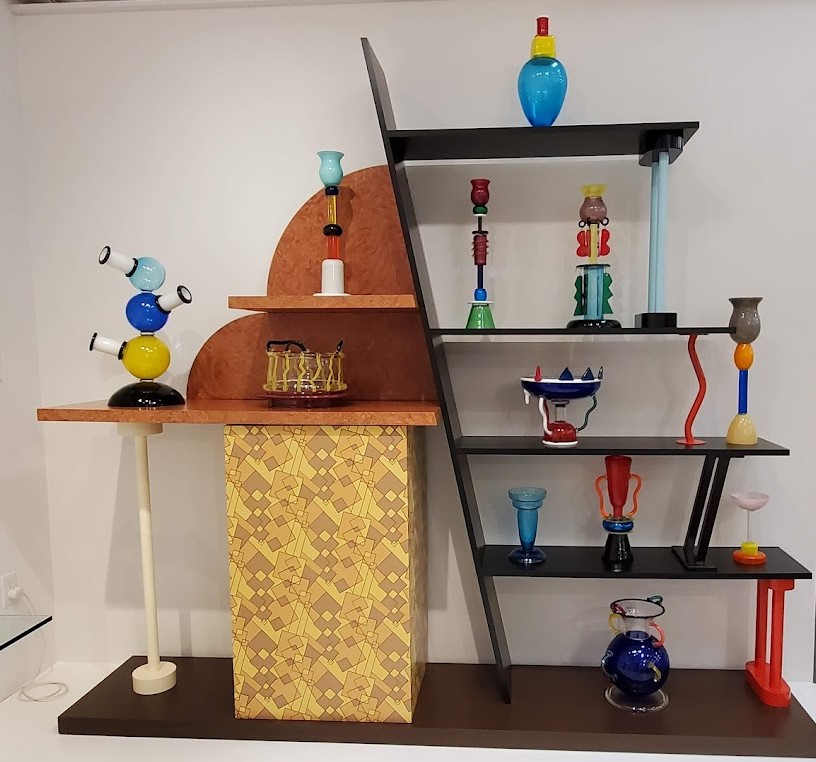
Memphis Glassware on Malabar, 1982, Ettore Sottsass 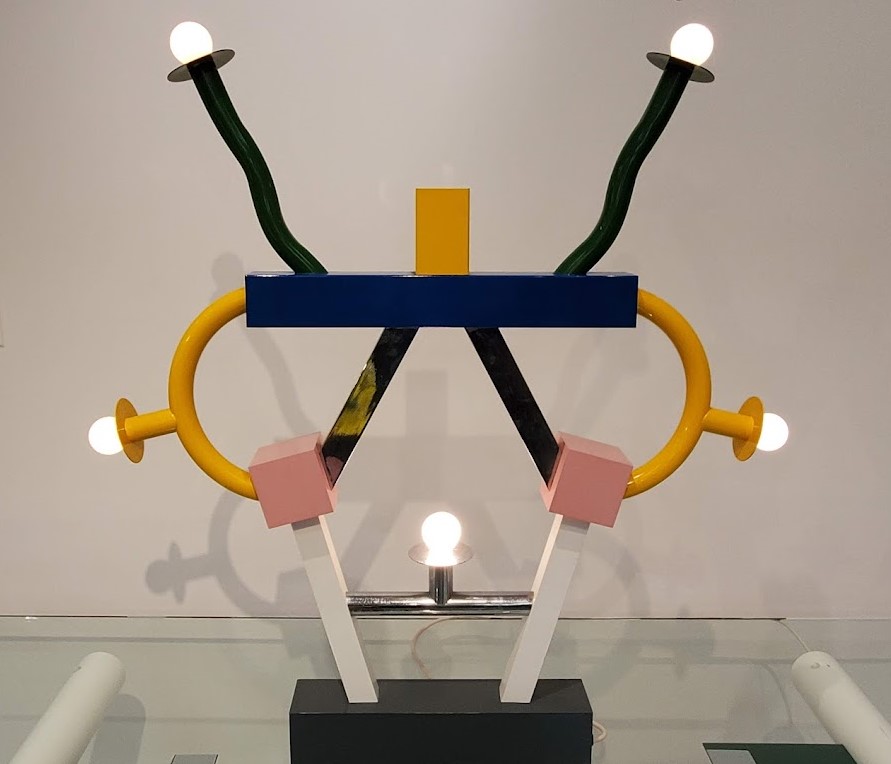
Ashoka, 1981, Ettore Sottsass. Lamp in painted & chromed steel
That reaction quickly changed, as we sat down for a few minutes to watch the suggested video — listening to Guest Curator Glenn Adamson and design expert and Memphis collector Keith Johnson talk about Ettore Sottsass and the history of the movement. That drew us into a new sphere of appreciation. There’s nothing like context to expand ones thinking!
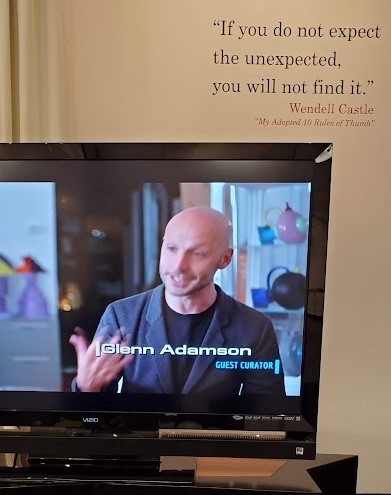
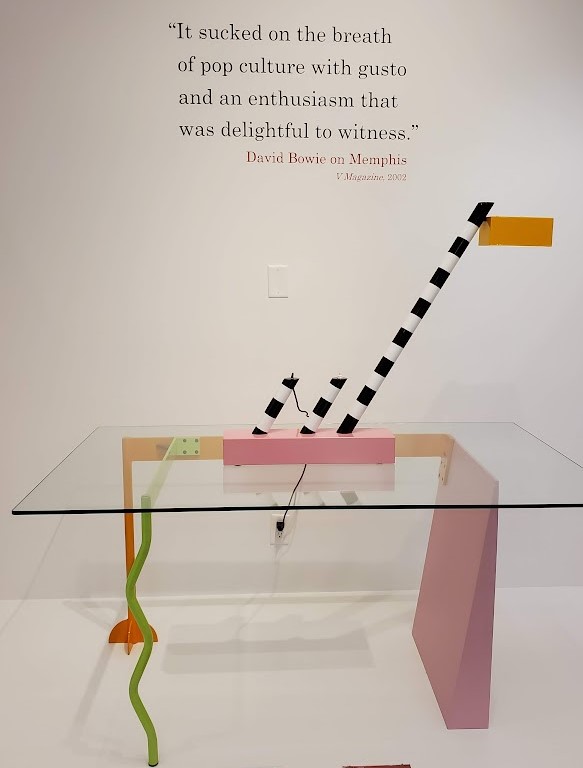
Oceanic, 1981, Michele de Lucchi. Table lamp in tubular steel & paint
Peninsula, 1982, Peter Shire. Table in metal and glass
Few did, but one could furnish an entire home with Memphis Design pieces, from beds, to seating, to room dividers and shelving, lamps, ceramics and glass, to carpets and fabrics. It was a breakthrough moment in design history. Memphis Milano’s wacky revolution was too radical to take hold in the home furnishings industry, but their ideas established the look of the ’80s and have continued to have a waxing and waning influence in popular culture and design ever since.
Although the original group of designers was mostly Italian, the collective was international — with two Americans, Michael Graves and Peter Shire. Many of us are familiar with Michael Graves through the original household products he designed for Target, and the best-selling kettle he designed for Alessi. But Graves — already a well-known architect by then — designed two iconic furnishings that were introduced at Memphis’ debut at the Milan Furniture Fair in 1981. One was the Stanhope bed, shown above, the other the Plaza vanity — both of which epitomized the melding of Art Deco lines with futurism, color and 1950s kitsch.
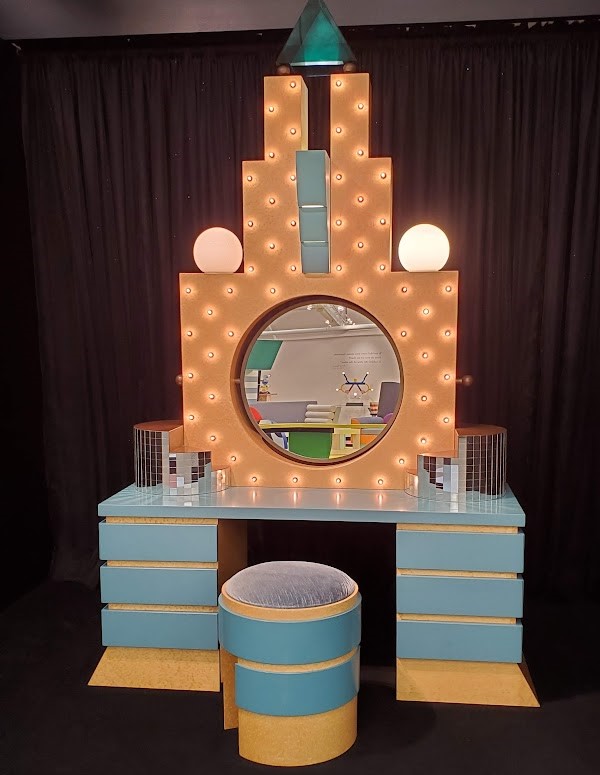
Plaza 1981, Michael Graves. Vanity in maple laminate, MDF, mirrored glass, brass & paint 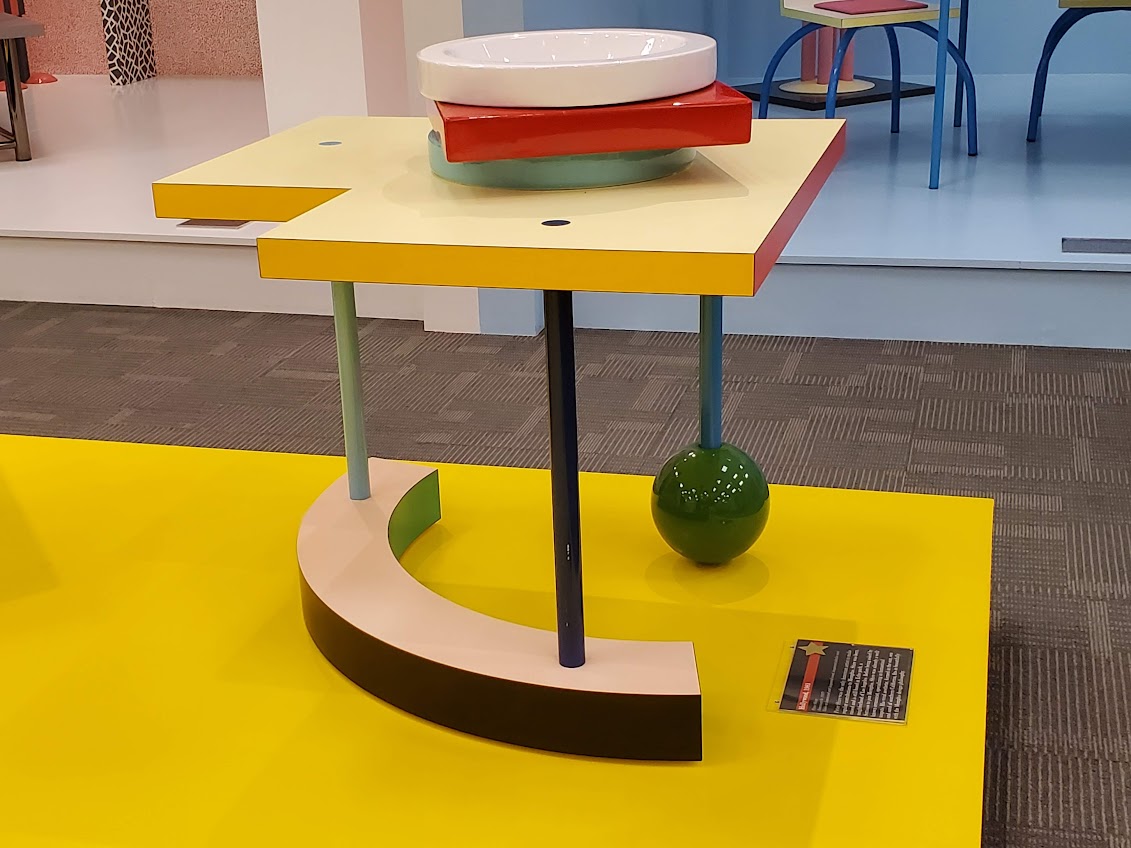
Hollywood, 1983, Peter Shire. Table in laminated & lacquered wood, lacquered tubular steel 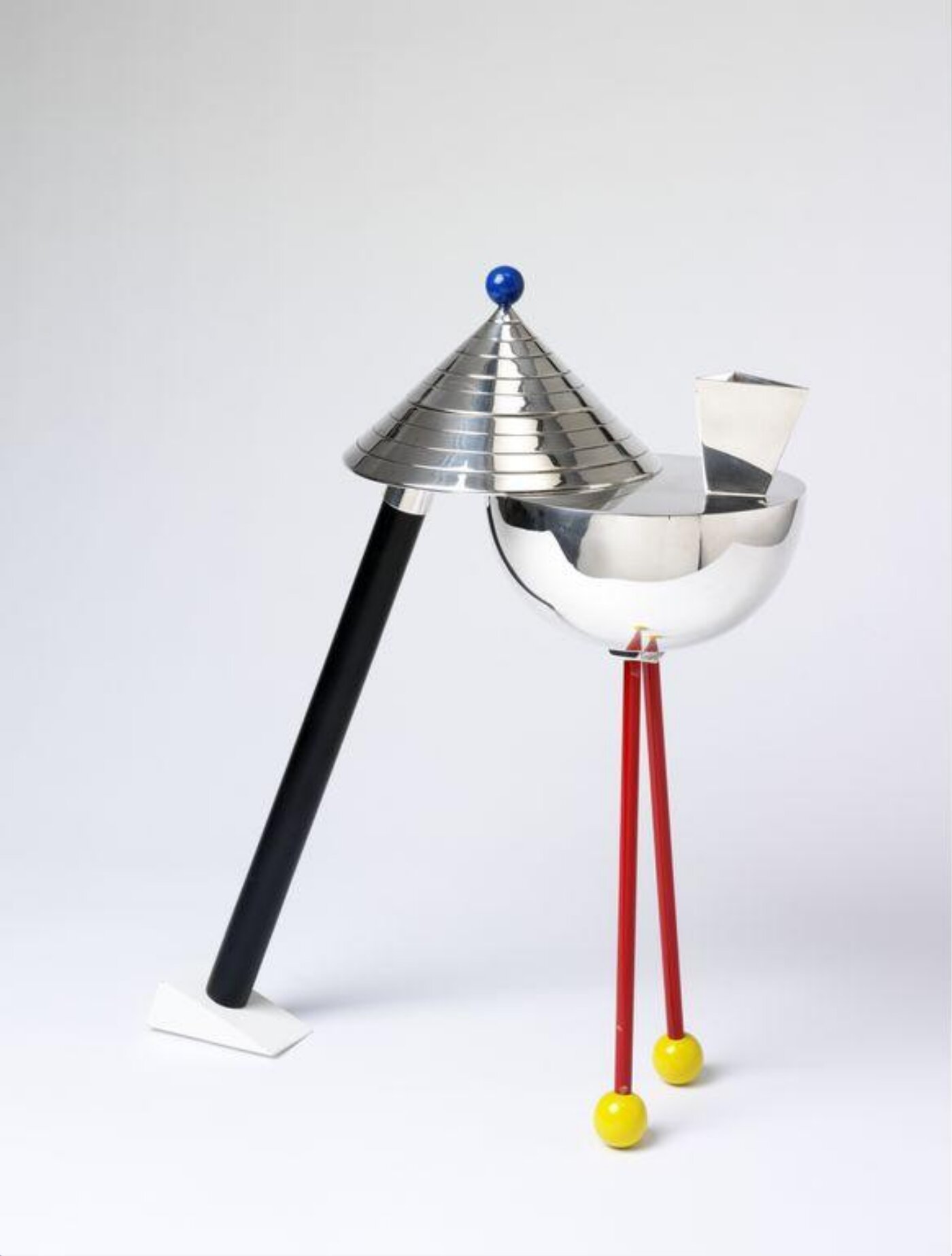
Anchorage, 1982, Peter Shire. Teapot in sterling silver
Peter Shire made regular contributions to Memphis. Before being asked by Sottsass to join the collective, Shire was already a well-known ceramicist, specializing in fantastical teapots. He continually explored the physics of teapots, reinterpreting their classical form in myriad ways. It was his teapots that caught Sottsass’ attention. He found them “fresh, witty and full of information for the future.”
The pink wall in the room vignette above is actually made up of a tiny “virus” pattern that has been reproduced in various colors and on materials including plastic laminate. Ettore Sottsass’ inspiration for the design — which he called “Bacterio” — came from the surface texture of a Buddhist temple wall in Madurai, India, reimagined in a field of squiggled abstraction.
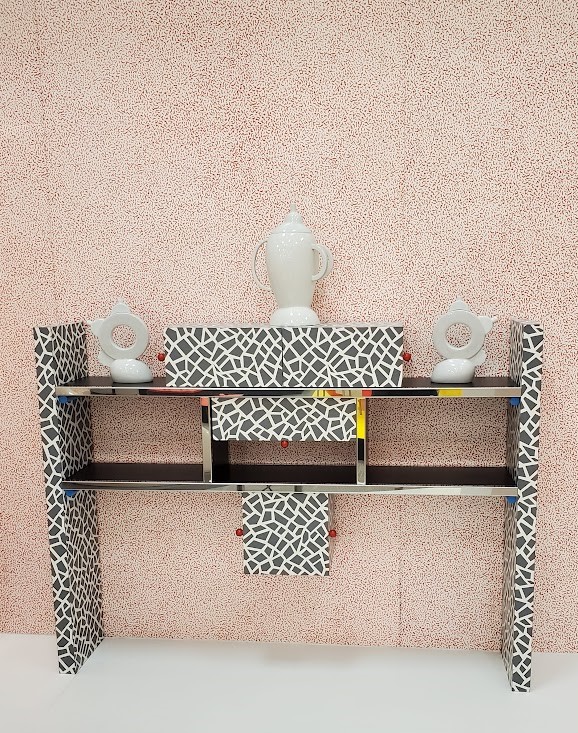
Lodge, 1982, Martine Bedin. Sideboard in wood and plastic laminate 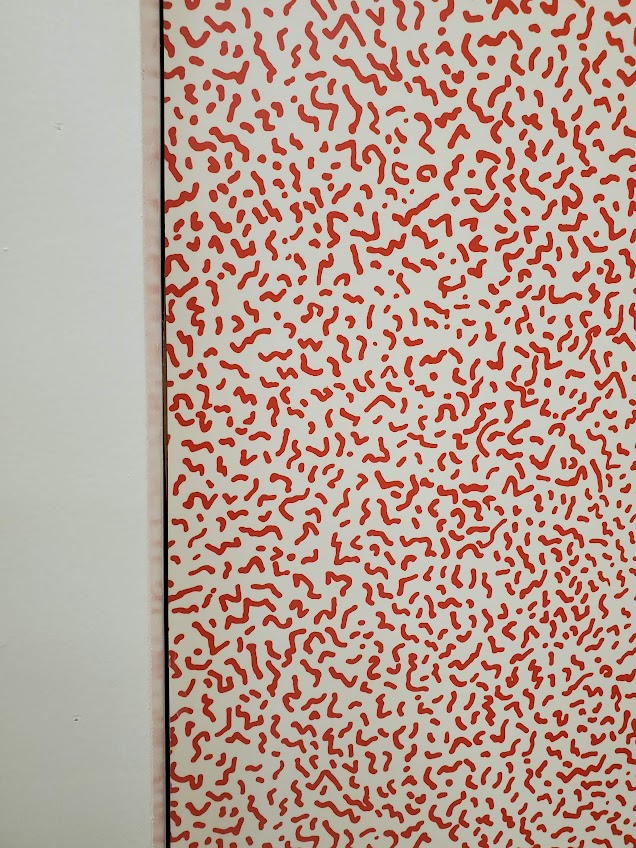
Bacterio, Ettore Sottsass 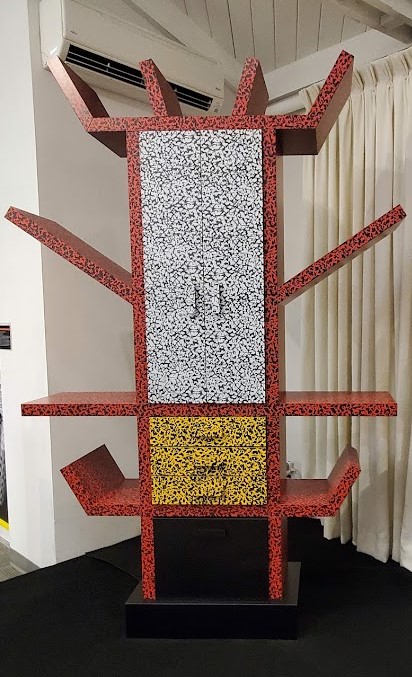
Casablanca, 1981, Ettore Sottsass. Sideboard in plastic-laminated wood
So much to see in a smallish space, chuckling from beginning to end. From Sottsass’ famous red typewriter — which apparently was the object that got David Bowie’s collection started — to a transparent chair with roses “floating” within, to the Caligari Steinway piano, the objects on display are serious fun. And if the explosion of color and geometry-run-amok begins to overwhelm, one can get away from it all by imagining a climb up into the cocoon of Wendell Castle’s black meditation pod that towers over the front of the gallery.
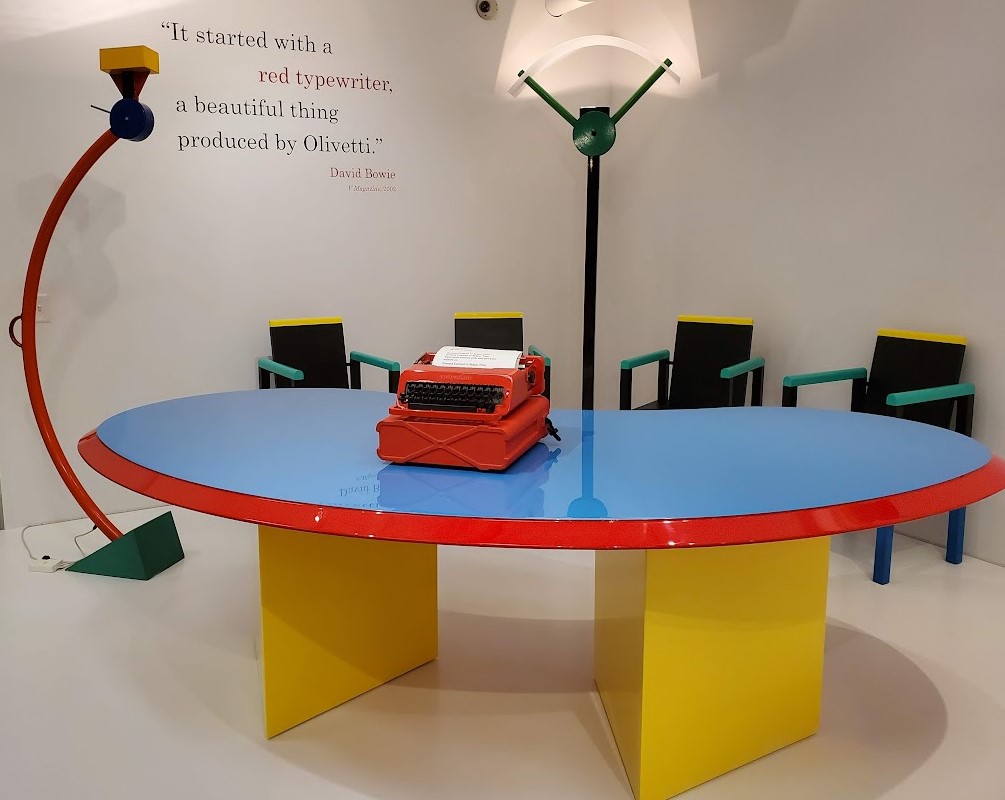
Valentine, 1968, Ettore Sottsass. Typewriter in ABS plastic, steel & rubber / Madonna, 1984, Arquitectonica. Table in lacquered wood
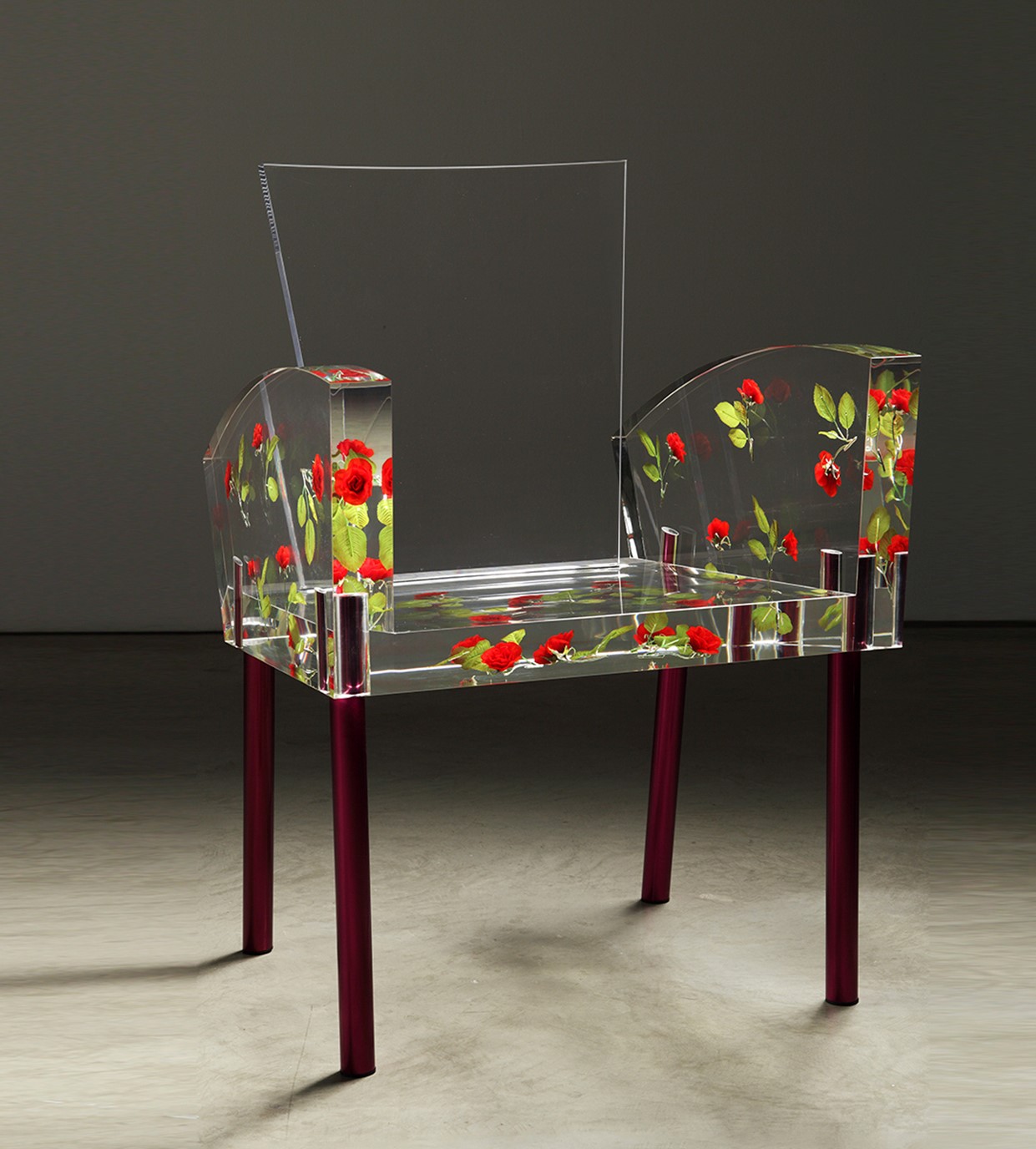
Miss Blanche, 1988, Shiro Kurmata. Acrylic resin, silk roses & aluminum tubing 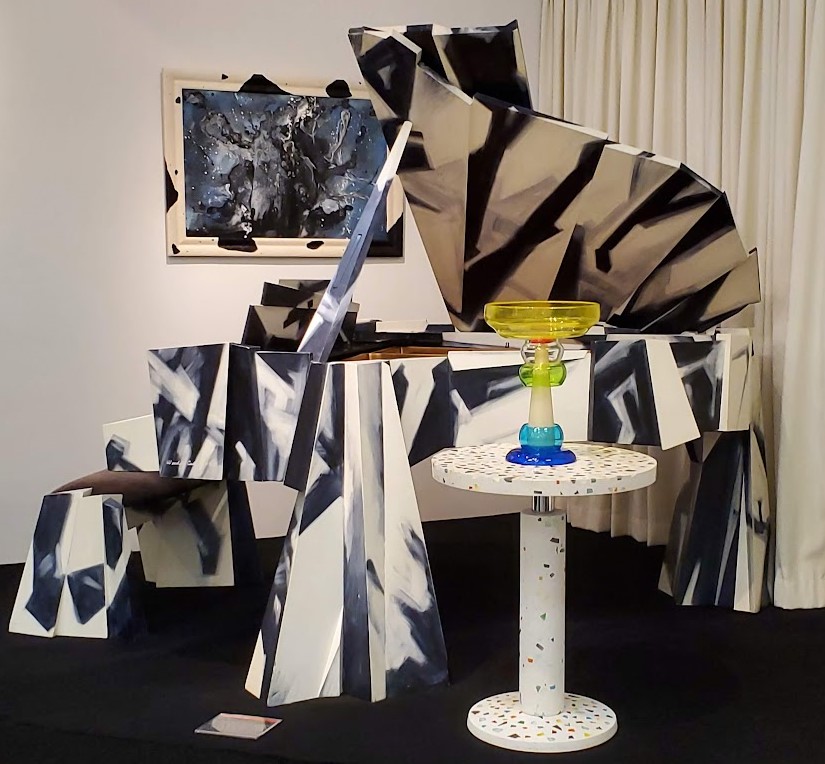
Caligari piano, 1990, Wendell Castle. Mahogany, poplar, acrylic paint & velour fabric 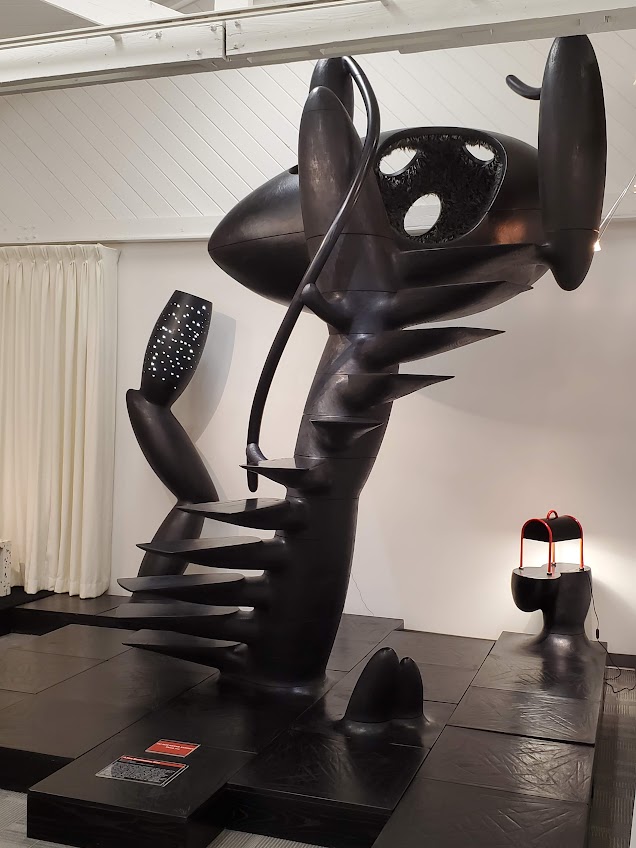
A New Environment, 2012, Wendell Castle. American ash, fiberglass & Flokati wool carpet
Mount Dora is a cute little lakefront town in central Florida, know for its art festivals and antique shops, cozy places to stay, and many restaurants. Our vote for the best restaurant in town is the award-winning 1921 Mount Dora, just across the street from the Modernism Museum. The restaurant maintains an allegiance with local growers, producers and food artisans, and it features a collection of artwork, with select pieces on loan from the Museum.
Hmmm … maybe it’s time to plan a little trip …
Modernism Museum Mount Dora
145 E 4th Ave, Mount Dora, FL
352-385-0034
Art Things Considered is an art and travel blog for art geeks, brought to you by ArtGeek.art — the only search engine that makes it easy to discover almost 1700 art museums, historic houses & artist studios, and sculpture & botanical gardens across the US.
Just go to ArtGeek.art and enter the name of a city or state to see a complete interactive catalog of museums in the area. All in one place: descriptions, locations and links.
Use ArtGeek to plan trips and to discover hidden gem museums wherever you are or wherever you go in the US. It’s free, it’s easy to use, and it’s fun!
© Arts Advantage Publishing, 2023
